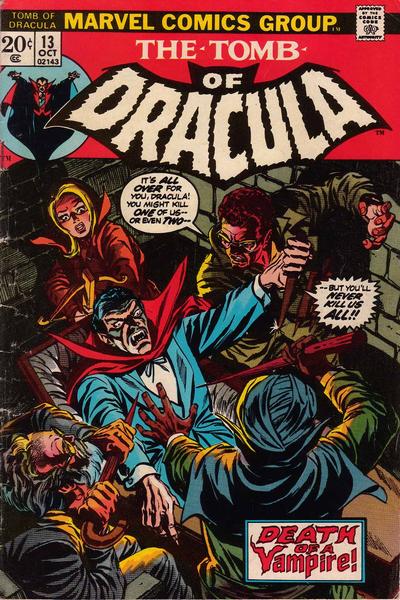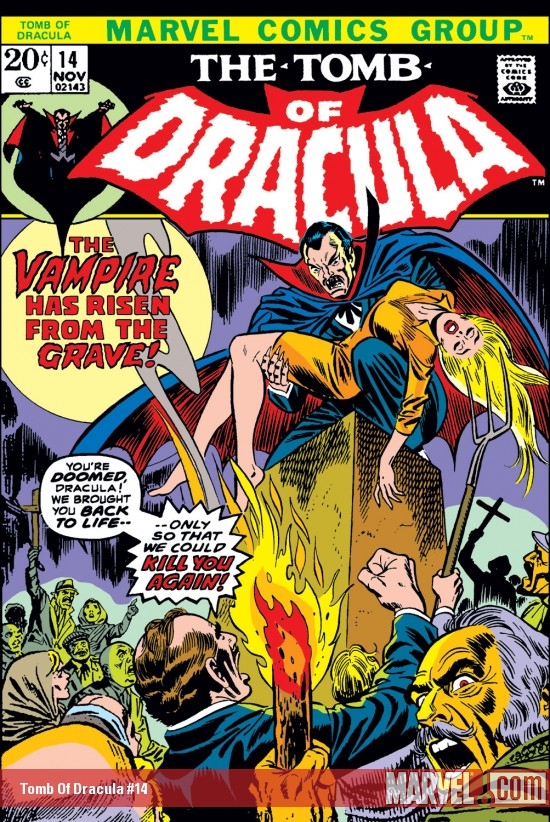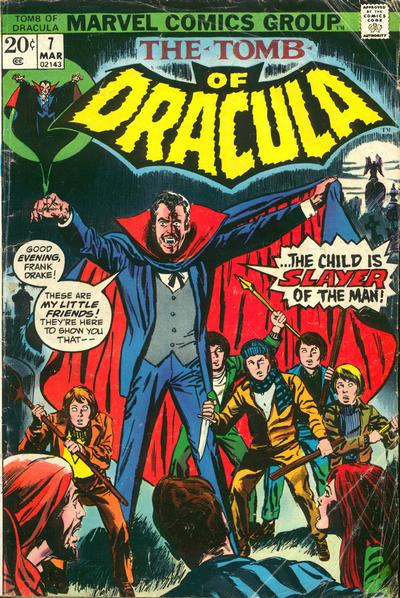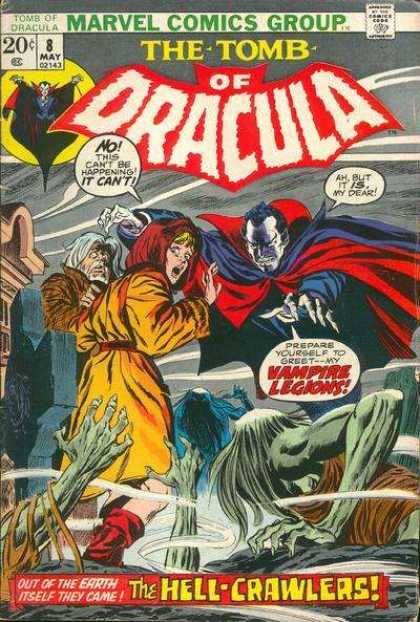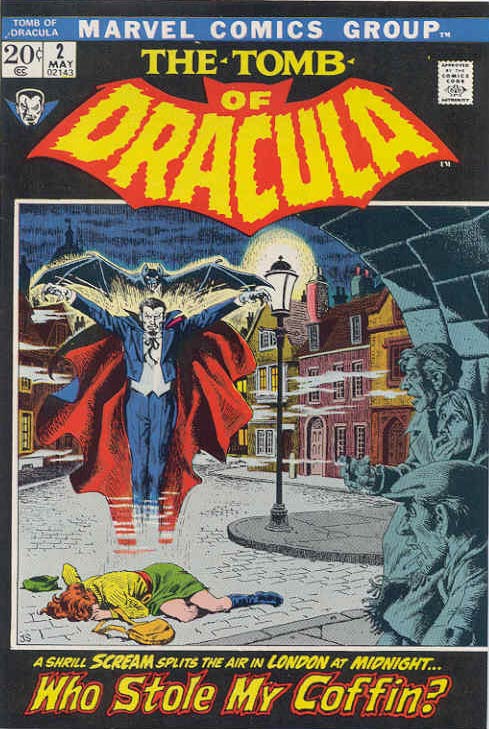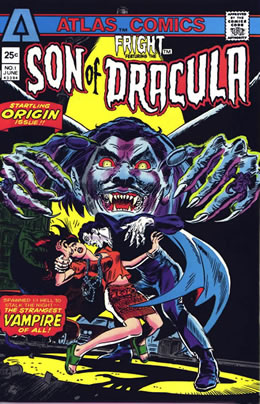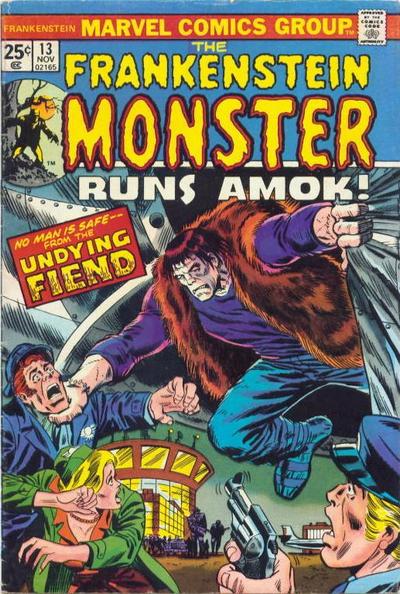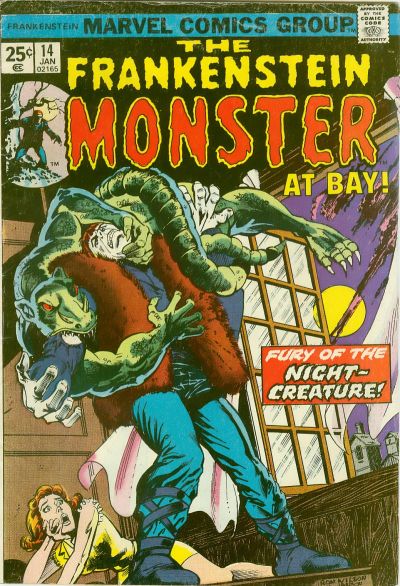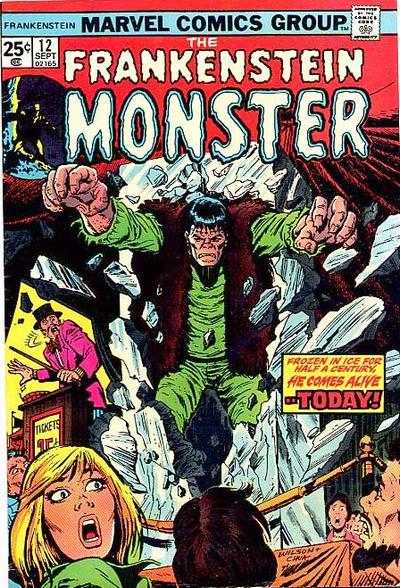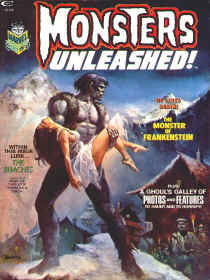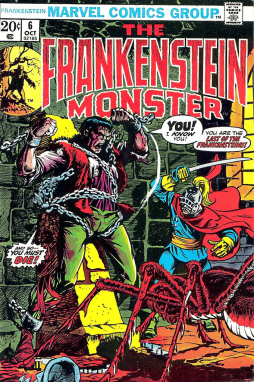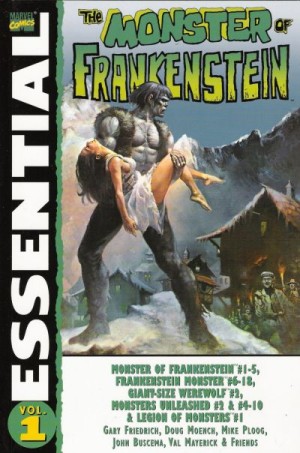Blogging Marvel’s The Tomb of Dracula, Part Four
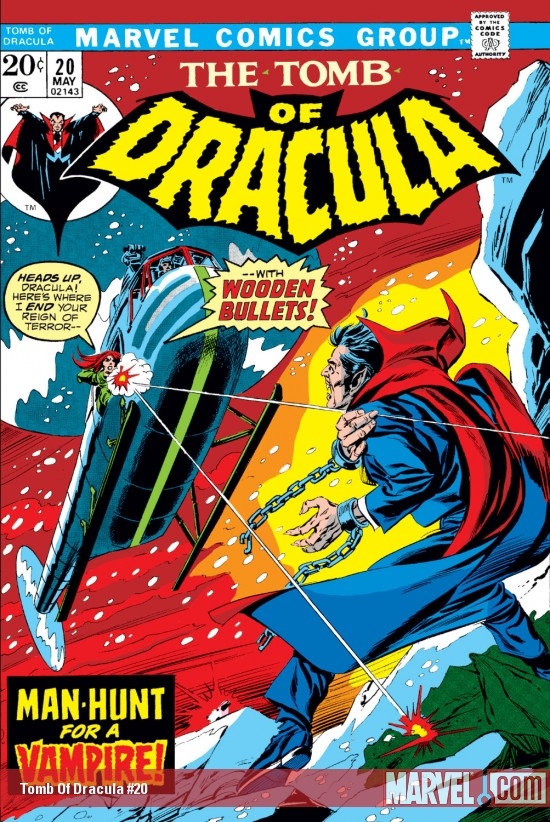
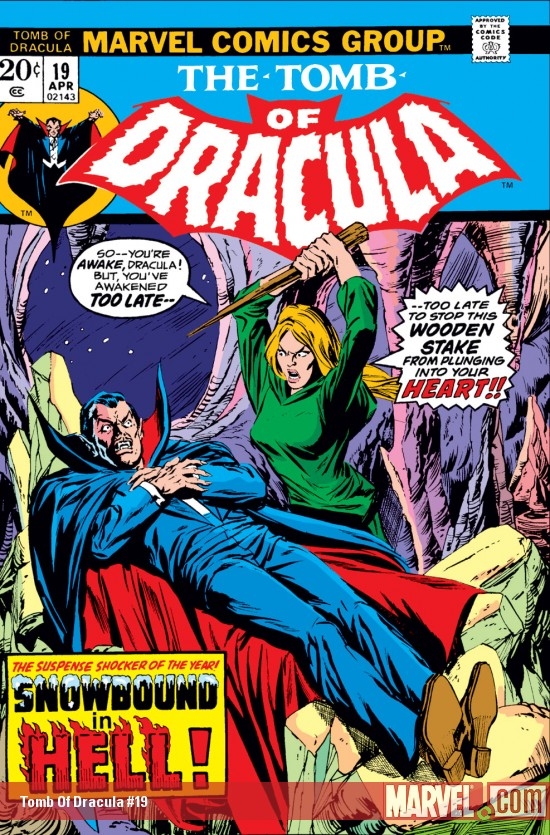 The Tomb of Dracula # 19, “Snowbound in Hell” is a sentimental favorite for me. This was the unlikely choice for Power Records to package with a 45 RPM record dramatizing the story, but it gave me my first taste of the series as a kid. This issue is a great character study with a snowbound Dracula and Rachel Van Helsing battling the elements to survive after their helicopter crashes in the frozen Alps. The ongoing subplots continue to build toward future storylines with Dr. Sun (still unseen) putting the vampire Brand through his paces while Quincy Harker learns Blade’s secret immunity to vampire bites. The story’s finish has Frank Drake successfully rescuing Rachel just seconds before she is about to fall victim to a starving Dracula who has been keeping her alive as a blood reserve. A nice change of pace issue that works well in developing the characters while advancing toward the inevitable showdown with Dr. Sun.
The Tomb of Dracula # 19, “Snowbound in Hell” is a sentimental favorite for me. This was the unlikely choice for Power Records to package with a 45 RPM record dramatizing the story, but it gave me my first taste of the series as a kid. This issue is a great character study with a snowbound Dracula and Rachel Van Helsing battling the elements to survive after their helicopter crashes in the frozen Alps. The ongoing subplots continue to build toward future storylines with Dr. Sun (still unseen) putting the vampire Brand through his paces while Quincy Harker learns Blade’s secret immunity to vampire bites. The story’s finish has Frank Drake successfully rescuing Rachel just seconds before she is about to fall victim to a starving Dracula who has been keeping her alive as a blood reserve. A nice change of pace issue that works well in developing the characters while advancing toward the inevitable showdown with Dr. Sun.
Issue 20, “The Coming of Dr. Sun” has Frank and Rachel hunting Dracula across the Alps by helicopter. Rachel reveals her traumatic childhood encounter with Dracula when he murdered her parents as part of his vengeance against the Van Helsing family. She reveals how Dracula was about to kill her until Quincy Harker’s timely arrival saved her. Dracula is captured by Dr. Sun’s minions who bring him to a secret hideout where Dr. Sun is revealed as a disembodied talking brain floating in a fish tank straight out of a 1950s B-movie. Clifton Graves survived the explosion aboard the ship and has been stitched back together and physically augmented by Dr. Sun. Graves attacks Dracula. Frank and Rachel stumble into the hideout and Graves is inadvertently killed by Rachel when she fires her crossbow at Dracula. The issue ends on a cliffhanger with Dracula, Frank and Rachel held captive by Dr. Sun.
